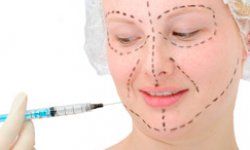Addictions are chronic and persistent behaviors that we continue to do despite the negative consequences, and although common addictions such as alcoholism and drug abuse may immediately come to mind, some people suffer from addictive behaviors -- and strange ones, at that. We may joke that we're addicted to chocolate, but what if you really were addicted to it? What if you couldn't stop eating chocolate no matter how sick it made you? Or, what if you were addicted to something else -- such as online gaming or eating dirt?
"Like addiction to heroin, these 'addictions' are an effort to control or avoid discomfort instead of learning to cope with it in ways that don't interfere with a person's relationships, safety or livelihood," explains Clairmarie Szopa, MS, LCPC, NCC, adjunct faculty at National-Louis University and counselor at Choices Counseling & Coaching.
Advertisement
So what strange behaviors are some people compelled to do? The first of our top 10 could be seen happening anywhere from Rodeo Drive to Fifth Avenue to the Mall of America.










